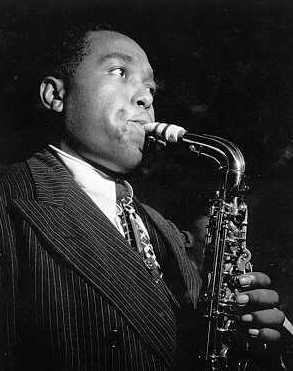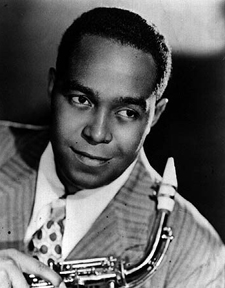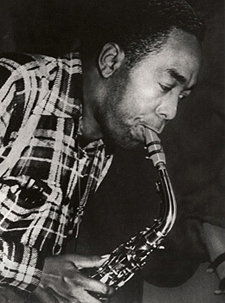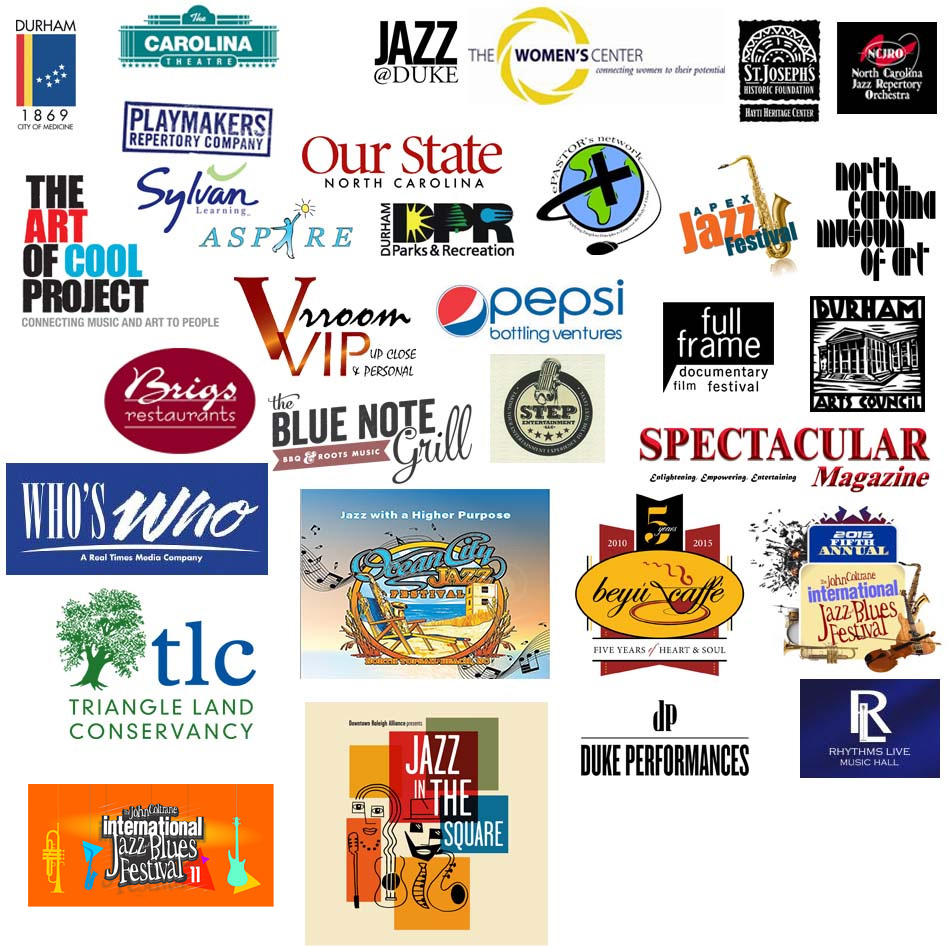Charlie Parker
 Charlie Parker was born in Kansas City, Kansas and raised in Kansas City, Missouri, the only child of Charles and Addie Parker. Parker attended Lincoln High School. He enrolled in September 1934 and withdrew in December 1935 about the time he joined the local Musicians Union.
Charlie Parker was born in Kansas City, Kansas and raised in Kansas City, Missouri, the only child of Charles and Addie Parker. Parker attended Lincoln High School. He enrolled in September 1934 and withdrew in December 1935 about the time he joined the local Musicians Union.
Parker began playing the saxophone at age 11 and at age 14 joined his school’s band using a rented school instrument. One story holds that, without formal training, he was terrible, and thrown out of the band. Experiencing periodic setbacks of this sort, at one point he broke off from his constant practicing.
In early 1936, it has been stated that Parker participated in a ‘cutting contest’ that included Jo Jones on drums, who tossed a cymbal at Parker’s feet in impatience with his playing. Groups led by Count Basie and Bennie Moten were the leading Kansas City ensembles, and undoubtedly influenced Parker. He continued to play with local bands in jazz clubs around Kansas City, Missouri, where he perfected his technique with the assistance of Buster Smith, whose dynamic transitions to double and triple time certainly influenced Parker’s developing style.
As a teenager, Parker developed a morphine addiction while in hospital after an automobile accident, and subsequently became addicted to heroin. Heroin would haunt him throughout his life and ultimately contribute to his death.
In 1939, Parker moved to New York City. There he pursued a career in music, but held several other jobs as well. He worked for $9 a week as a dishwasher at Jimmie’s Chicken Shack where pianist Art Tatum performed. Parker’s later style in some ways recalled Tatum’s, with dazzling, high-speed arpeggios and sophisticated use of harmony.
On November 26, 1945 Parker led a record date for the Savoy label, marketed as the “greatest Jazz session ever.” The tracks recorded during this session include “Ko-Ko” (based on the chords of “Cherokee”), “Now’s the Time” (a twelve bar blues incorporating a riff later used in the late 1949 R&B dance hit “The Hucklebuck”), “Billie’s Bounce”, and “Thriving on a Riff”.
On November 30, 1949, Norman Granz arranged for Parker to record an album of ballads with a mixed group of jazz and chamber orchestra musicians. Six master takes from this session comprised the album Bird With Strings: “Just Friends”, “Everything Happens to Me”, “April in Paris”, “Summertime”, “I Didn’t Know What Time It Was”, and “If I Should Lose You.” The sound of these recordings is unique in Parker’s catalog. The lush string arrangements recall Tchaikovsky in their dramatic sweep, and the rhythm section provides a delicate swing under Parker’s improvisation, blending perfectly with the orchestra. Parker’s improvisations are, relative to his usual work, more distilled and economical. His tone is darker and softer than on his small-group recordings, and the majority of his lines are beautiful embellishments on the original melodies rather than harmonically based improvisations. He is always tasteful and brimming with eloquent expression. These are among the few recordings Parker made during a brief period when he was able to control his heroin habit, and his sobriety and clarity of mind are evident in his playing. Parker stated that, of his own records, Bird With Strings was his favorite.
In 1953, Parker performed at Massey Hall in Toronto, Canada, joined by Gillespie, Mingus, Bud Powell and Max Roach. Unfortunately, the concert clashed with a televised heavyweight boxing match between Rocky Marciano and Jersey Joe Walcott and as a result was poorly attended. Thankfully, Mingus recorded the concert, and the album Jazz at Massey Hall is often cited as one of the finest recordings of a live jazz performance, with the saxophonist credited as “Charley Chan” for contractual reasons.
Parker died in the suite of his friend and patron Nica de Koenigswarter at the Stanhope Hotel in New York City while watching Tommy Dorsey on television. Though the official causes of death were lobar pneumonia and a bleeding ulcer, Parker’s demise was undoubtedly hastened by his drug and alcohol abuse. The coroner who performed his autopsy mistakenly estimated Parker’s 34-year-old body to be between 50 and 60 years of age. Parker was buried at Lincoln Cemetery in Kansas City, Missouri.
Shortly after Parker died, graffiti began appearing around New York with the words ‘Bird Lives.’

